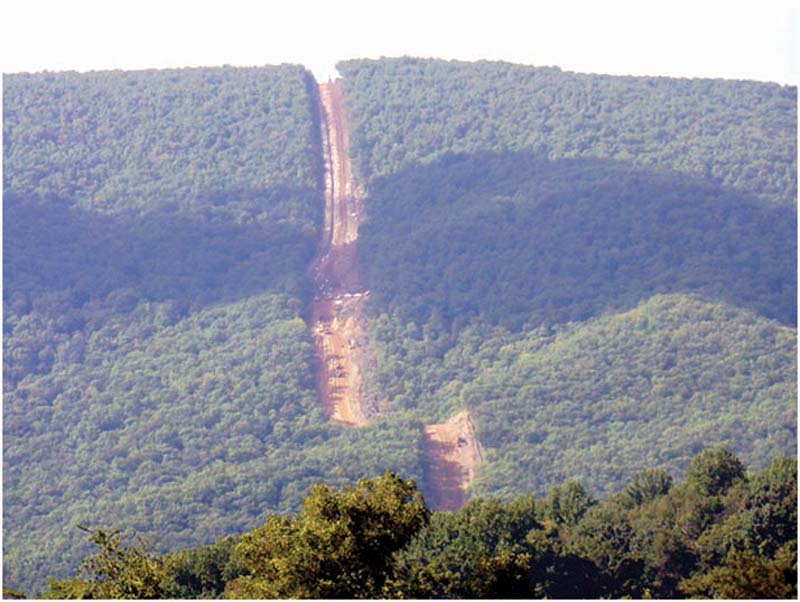By now everyone knows that the Atlantic Coast Pipeline is dead.
Not everyone knows that there are still issues around the pipeline, ranging from those at the corporate level that none of us will ever likely find out about, to cleanup and remediation of land where excavation was done.
Looming larger than every other issue is the question of who owns the land now that the ACP is gone? It seems like an easy question to answer at first glance. Since the company is gone and won’t be using the land, the landowner should get it back.
It’s not that simple from a legal perspective, though.
You see, all of the paperwork that the Atlantic Coast Pipeline had landowners sign was permanent. The paperwork wasn’t titled “Deed for Real Estate”, but it might as well have been. All the rights that people gave to the pipeline were given forever. The ACP still owns the rights to the land it bought.
When the Atlantic Coast Pipeline quit trying to build a pipeline it didn’t just evaporate away into the ether. The company is still around. Even if something happened to the company, such as bankruptcy or even legal dissolution, it can and will sell the land it owns to another company. Those agreements are valuable and permanent.
Is there anything that a landowner can do?
Well, the Atlantic Coast Pipeline seems to be doing the right thing in respect to landowners and making it so that that land reverts back to them. The company is reaching out to landowners to get them to sign paperwork that gives the ACP time to do remediation work on their land and in exchange they are saying that the property rights will be given back to the landowner. That won’t happen for a number of years yet, but at least it looks like there’s a chance.
I sincerely hope it happens.
It’s not outside the realm of possibility that the Atlantic Coast Pipeline could be revived, though. Some company could come along and buy the paperwork from ACP and start the construction and permitting process back up under a different name. It would be a long, hard project, bit it could happen.
So don’t get your hopes up until the deed is done.
I’m going to toot my own horn now. All of the people who came to me for help with the Atlantic Coast Pipeline were able to negotiate for a clause that said that when the pipeline was no longer in use, the pipeline right of way would revert back to the surface owner who could then remove the pipe if they wanted to. They also got specific language saying that the right of way could only be used for pipeline purposes. No converting it over to some other use, such as a power line right of way.
My clients don’t have to worry about whether they can use their property, or who is going to own it in the future. They know that once the right of way is no longer part of the pipeline, it’s theirs, outright.
The moral to this story is to go find a lawyer who knows the issues you’re facing. When you need an oil and gas attorney, a personal injury attorney just won’t do.

